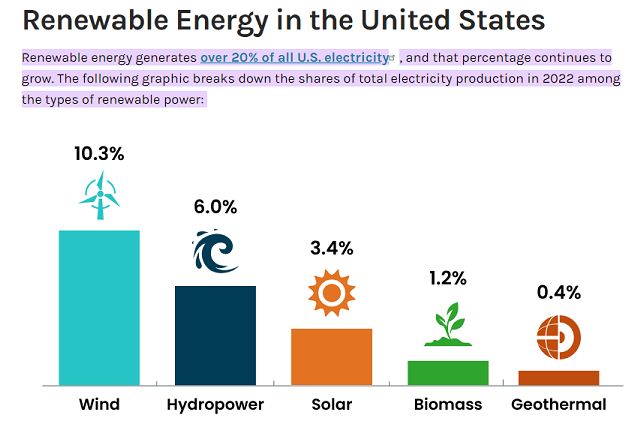
16 Apr 2024
Will Green Hydrogen Enter the Renewable Energy Picture?
Whither hydrogen? That is to say, how quickly or slowly will hydrogen-powered electricity grow and what is its ultimate destiny in addressing the world's slow march to Net Zero and address the existential aspects of climate change?
At the moment, the best form of hydrogen, known as green hydrogen (GH2), is produced in the US at the rate of about 700,000 metric tons annually. It provides about 0.5% of the world's energy, according to IDCA Research. A similar small percentage is evident in the rest of the world.
Green hydrogen is one of many named colors of this type of energy. It produces the smallest amount of emissions in its generation. It is produced through electrolysis using traditional renewable energy sources. Other colors are produced from existing dirty energy sources with differing levels of emissions during its production.
How Big a Market?
Assuming that the costs of green hydrogen production go down also assumes that its demand for it will go up. One report from Goldman Sachs estimates green hydrogen as a $1 trillion market by 2050. However, that is only six times the size of the current green hydrogen market. That implies a market share for GH2 of only 3%
Looking at it another way, all the world's electricity costs about $4.2 trillion per year. If inflation and real economic growth are pegged at a very conservative 2% between now and 2050, and electricity costs remain relatively the same, that projects to a global electricity market of $11.8 trillion in 2050. The Goldman $1 trillion market would thus represent 8.5% of the total.
Working the Problem
The latter scenario is more optimistic than the former, but still dampens the notion of green hydrogen as a great green-energy savior. Yet, there are considerable numbers of people working the problem of making mass consumption of green hydrogen a reality. They are currently focused on (according to an upcoming conference):
* The cost of production, price levels, competitiveness, and comparisons with other energy sources
* Current and potential markets in industries including power generation, transportation, chemicals
* The roles and interest by major oil companies in their plans for incorporating hydrogen in energy transition
* Utility perspectives and updates on investment in hydrogen
* Ammonia and hydrogen transportation
* Infrastructure investment, including repurposing infrastructure
* New federal and state legislation with incentives for decarbonization
* Projects supporting hydrogen infrastructure and storage
The Importance of Magic
This is where magic enters the picture. The great science writer Arthur C. Clarke famously said, in 1962 that “any sufficiently advanced technology is indistinguishable from magic.” The quote is one of his so-called Three Laws, which also state that if a very experienced, knowledgeable person says something is impossible, he or she is very probably wrong (in the long term).
So, again, whither hydrogen? Can it join existing sustainable technologies in a viable way, and maybe even lead the parade some day?
Follow us on social media:


.d57b427b.png&w=3840&q=75)

















